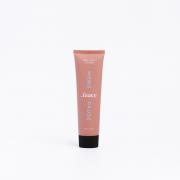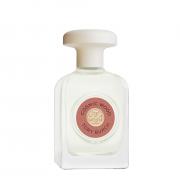Whilst many people associate a tan with looking healthy, Sussex GP Dr Tizzy Camilleri tells us it is a sign that our skin is already harmed by UV radiation and is trying to defend itself against further damage
More than 70,000 new cases of skin cancer are diagnosed annually in the UK and extensive sun exposure is thought to be responsible for the vast majority of these. In more than four out of five cases, skin cancer is a preventable disease. After another cold winter, people look forward to being outdoors and feeling some warmth. Not only do the Sussex residents take advantage of the beautiful countryside and coastline but many visitors come to enjoy it as well. Indeed some sunshine, below sunburn level, can be good for us, helping the body create vitamin D and giving us a feeling of general wellbeing but we need to protect ourselves against the sun.There are two main types of damaging ultraviolet (UV) sunlight, UVA and UVB, both of which increase your risk of developing skin cancer. UVA rays penetrate deeper into the skin, damaging the middle layer (dermis), which contains the elastic tissues that keeps the skin stretchy. Therefore it is the UVA rays, which have the effect of ageing the skin and causing wrinkles. UVB rays are absorbed by the top layer of the skin (epidermis), which results in an increase of melanin (coloured pigment in the top layer of your skin) being produced to help protect your skin against the UV rays. Hence the skin becomes darker, and it is this which people refer to as a “sun tan”. Although melanin stops your skin burning so easily, it does not prevent the harmful effects of the UV rays, and is a sign of your body protecting itself.The minimum sun factor protection (SPF) that should be applied is 15 for adults and 30 for children. The SPF label shows the protection against UVB, and therefore protects against sunburn. SPF15 filters 93 per cent of UVB radiation, while SPF30 filters out 96 per cent. No sunscreen provides 100 per cent protection, and therefore it is essential that it is applied generously and regularly. Around two teaspoonfuls are needed to cover your head, arms and neck and around two tablespoonfuls if you're covering your entire body, while wearing a swimming costume. It is known that the majority of us don’t apply enough sunscreen and so dermatologists recommend that everyone should use a protection of SPF30+ to take this into account and ensure that we have enough protection. Broad spectrum sunscreens block out UVA rays as well as UVB. In the UK UVA protection is done with a “star” system from zero to five stars (with the best protection being four stars or more). According to the EU Recommendation, the UVA protection for each sunscreen should be at least a third of the labelled SPF, a product that achieves this requirement will be labelled with a “UVA” printed within a circle. It is recommended that sunscreen is applied at least 20-30 minutes before going into the sun (it takes a short time to soak in and also to work). It should be reapplied at least every two hours, and always after swimming (if waterproof, it can tolerate up to a total of 40 minutes of moderate water activity), towelling yourself and after excessive sweating.Many women are being drawn to buying moisturisers which have an SPF. It is worth noting that moisturisers containing an SPF may not contain any UVA protection. So although a moisturiser with an SPF will help protect against small amounts of UV exposure, it won’t protect against spending your lunch hour outside.Sunblocks are opaque and stronger than sunscreens and are able to block most UVA and UVB rays. However, they’re not 100 per cent protective so take other measures such as keeping out of strong sunlight between 11am and 3pm, and wearing a wide-brimmed hat and tightly woven clothes to protect from UV penetration. Ultimately, remember using sunscreen doesn't mean that you can sunbathe for long periods without harm.


























